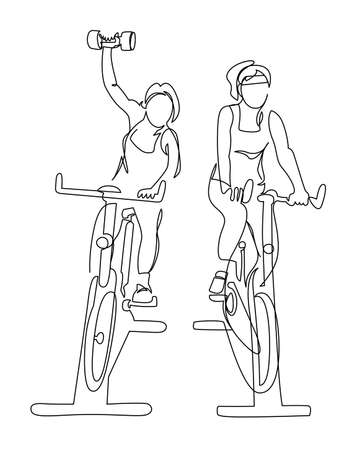Introduction to Rural Cardiac Rehabilitation in the British Isles
Cardiac rehabilitation is a cornerstone of modern heart health care, offering structured support and guidance for individuals recovering from cardiac events or managing chronic heart conditions. Across the British Isles—which includes England, Scotland, Wales, Northern Ireland, and the Republic of Ireland—these programmes are proven to reduce hospital admissions, improve quality of life, and decrease mortality rates. However, while many urban centres have established robust cardiac rehabilitation pathways, rural and remote communities face unique challenges that can limit access and effectiveness. From the rolling Highlands of Scotland to the rugged coastlines of Cornwall and the dispersed populations in Northern Ireland and rural Ireland, geographic isolation often compounds social, economic, and logistical barriers to care. This article will explore how these distinctive rural settings shape both the delivery and uptake of cardiac rehabilitation services across the UK and Ireland, highlighting why innovative solutions are essential for equitable heart health outcomes.
2. Key Challenges Facing Rural Cardiac Rehabilitation
Delivering cardiac rehabilitation services across rural areas of the British Isles presents a unique set of challenges that differ markedly from those encountered in urban settings. Patients living in the countryside often face significant barriers that can impede their recovery journey and limit their access to vital care. Below, we discuss some of the main obstacles affecting rural cardiac rehabilitation, with a particular focus on geographical isolation, transportation difficulties, limited specialist availability, and digital divides.
Geographical Isolation
Many rural communities are situated far from major healthcare centres, making it difficult for patients to attend regular rehabilitation sessions. This separation not only increases travel time and costs but also contributes to a sense of isolation, which can negatively impact motivation and mental health during recovery.
Transportation Issues
Lack of reliable public transport is a common issue in remote areas across the British Isles. For many cardiac patients who may be unable to drive post-surgery or due to other health conditions, this becomes a significant barrier to accessing timely rehabilitation services.
Comparison of Urban vs. Rural Access Factors
| Factor | Urban Areas | Rural Areas |
|---|---|---|
| Distance to Care Facilities | Shorter, more accessible | Longer, often challenging routes |
| Public Transport Availability | Frequent and diverse options | Sparse or non-existent services |
| Access to Specialist Staff | Adequate presence in hospitals/clinics | Limited, sporadic outreach services |
| Digital Connectivity | Reliable high-speed internet common | Poor connectivity; frequent outages |
Limited Access to Specialist Care
The distribution of healthcare professionals specialising in cardiac rehabilitation is heavily skewed towards larger towns and cities. In rural regions, patients may only have intermittent access to specialists through visiting clinics or telemedicine—which itself is constrained by digital infrastructure.
The Digital Divide
The shift toward remote and digital solutions in healthcare delivery has highlighted inequalities in internet access across the British Isles. Many rural households still lack reliable broadband connections, making it difficult for them to participate in virtual rehabilitation programmes or benefit from online educational resources.
Summary of Key Barriers for Rural Cardiac Patients:
- Long distances to healthcare facilities increase travel burden.
- Lack of dependable public transport limits accessibility.
- Sporadic specialist support reduces continuity of care.
- Poor digital infrastructure hinders participation in virtual rehab.
Tackling these barriers requires creative, patient-centred approaches tailored to the realities faced by rural communities across the British Isles.

3. Patient and Community Perspectives
Understanding the experiences of rural patients and communities across the British Isles is crucial in tailoring effective cardiac rehabilitation (CR) services. Many individuals living in remote or countryside areas face unique challenges shaped by local culture, longstanding health beliefs, and the available support networks within their communities.
Cultural Factors Influencing Engagement
Rural regions often have strong cultural identities, with a sense of self-reliance and community cohesion. However, these characteristics can sometimes result in hesitancy to seek formal healthcare support or participate in structured rehabilitation programmes. For some, there may be a stigma attached to attending group sessions or discussing health concerns outside close family circles, especially in tightly knit villages where privacy is highly valued.
Health Beliefs and Attitudes
Attitudes towards heart disease and recovery can vary significantly among rural populations. Some individuals may view heart conditions as inevitable with age or believe that physical labour alone suffices for rehabilitation, potentially limiting engagement with specialist CR services. Misconceptions about what cardiac rehab involves or doubts about its benefits may further deter participation.
The Importance of Local Support Networks
Despite these barriers, strong local networks—such as faith groups, sports clubs, and volunteer organisations—can be powerful assets. Where trust is already established within these networks, they can play a pivotal role in raising awareness about CR, encouraging participation, and providing ongoing peer support throughout the recovery journey. Leveraging community champions or respected local figures to share positive experiences can also help overcome scepticism and encourage others to attend.
Ultimately, placing patient perspectives at the heart of service design—by listening to their needs, values, and preferences—ensures that rural cardiac rehabilitation becomes more accessible, relevant, and effective for everyone across the British Isles.
4. Innovative Solutions and Adaptations
Rural cardiac rehabilitation (CR) services across the British Isles have faced significant hurdles, from long travel distances to limited healthcare infrastructure. However, a variety of innovative strategies and digital tools are bridging these gaps, ensuring patients in remote communities receive high-quality care tailored to their needs.
Successful Strategies in Rural Cardiac Rehabilitation
Many regions have adopted creative approaches that leverage local resources and community partnerships. For instance, collaboration with community centres, local leisure facilities, and even mobile health units has enabled the delivery of group-based CR sessions closer to patients’ homes. Additionally, training community health workers and volunteers has extended the reach of specialist teams into previously underserved areas.
| Strategy | Description | Example Region |
|---|---|---|
| Community-Based Programmes | Utilising local halls or sports centres for supervised exercise and education sessions | Cornwall, Highlands |
| Mobile Health Units | Bringing CR assessment and follow-up directly to rural villages on a scheduled basis | Northern Ireland, Wales |
| Partnerships with Third Sector Organisations | Working with charities and voluntary groups to facilitate peer support and lifestyle coaching | Lancashire, Scottish Borders |
| Train-the-Trainer Models | Empowering local nurses and physiotherapists with CR expertise through mentorship from urban specialists | Dorset, Isle of Man |
Digital Innovations Transforming Rural Cardiac Rehabilitation
The COVID-19 pandemic accelerated the adoption of digital solutions within NHS Trusts across the UK. Many rural CR programmes now offer blended models combining virtual consultations, remote monitoring, and online education. Notably, digital platforms allow patients to access tailored exercise videos, track their progress, and communicate securely with clinicians without leaving home.
Key Digital Tools in Use:
- Telehealth Consultations: Video calls for assessment and follow-up reduce the need for travel and enable ongoing engagement.
- Mobile Apps: Customised CR apps provide exercise plans, medication reminders, symptom tracking, and motivational messages.
- Wearable Devices: Heart rate monitors and fitness trackers supply real-time data to both patients and clinical teams.
- E-Learning Modules: Interactive educational content empowers patients with knowledge about heart health and self-management strategies.
Cultural Adaptation and Patient-Centred Care
Importantly, these solutions are tailored to reflect local languages, cultural preferences, and literacy levels—ensuring inclusivity across diverse rural populations. For example, some Scottish programmes incorporate Gaelic translations or partner with local leaders to foster trust among residents.
Together, these innovative practices are helping to overcome geographic barriers while upholding the gold standard of cardiac rehabilitation across every corner of the British Isles.
5. Professional Practice and Interdisciplinary Collaboration
Delivering cardiac rehabilitation services in rural areas across the British Isles presents unique challenges that demand innovative approaches to professional practice and collaboration. Integrated care is particularly vital, as patients often face barriers such as geographic isolation and limited access to specialist services. By fostering multidisciplinary teamwork, healthcare professionals can pool their expertise to provide seamless, patient-centred support tailored to individual needs.
Effective interdisciplinary collaboration involves not only cardiologists, nurses, and physiotherapists but also dietitians, mental health specialists, and community health workers. Each member plays a crucial role in ensuring continuity of care—helping patients navigate complex health systems while maintaining consistent messaging and motivation throughout their rehabilitation journey. Regular communication and shared decision-making are essential components of this collaborative approach, enabling teams to anticipate challenges and adapt interventions responsively.
Sharing best practices adapted for rural contexts is fundamental. Rural settings may require creative solutions, such as utilising digital platforms for remote consultations or partnering with local organisations to deliver group exercise sessions closer to home. Peer-to-peer learning networks across the British Isles have proven invaluable in spreading successful strategies—from flexible appointment scheduling to culturally sensitive education materials—ensuring that no community is left behind.
Ultimately, professional practice rooted in integrated care and robust interdisciplinary collaboration not only enhances clinical outcomes but also builds trust within rural communities. By continuously reflecting on and refining these practices, healthcare teams can address disparities in cardiac rehabilitation provision and champion equitable access for all patients, regardless of postcode.
6. Policy, Funding, and Future Directions
The sustainability and effectiveness of rural cardiac rehabilitation (CR) services across the British Isles are strongly influenced by national NHS policies, local commissioning frameworks, and the strategic allocation of resources. Ensuring equitable access to high-quality CR in remote and rural communities requires a multi-faceted approach that recognises the unique challenges faced by these areas.
NHS Policies and Strategic Priorities
The NHS Long Term Plan underscores prevention, personalised care, and reducing health inequalities as core priorities. For rural cardiac rehabilitation, this means adapting policy frameworks to address geographical barriers, workforce shortages, and digital divides. Tailoring national guidelines for local contexts—such as supporting flexible service models or incentivising collaboration between primary and secondary care providers—can help bridge existing gaps in rural service provision.
Local Commissioning and Resource Allocation
Effective local commissioning is essential to ensure that rural populations receive targeted investment in CR services. Integrated Care Boards (ICBs) and devolved health authorities must prioritise CR within broader population health strategies, aligning resources with areas of greatest need. This could involve ring-fencing funds for community outreach programmes, investing in mobile or satellite clinics, or enhancing digital infrastructure to support remote delivery options. Transparent monitoring of outcomes will enable commissioners to identify disparities and direct funding accordingly.
Addressing Funding Constraints
Rural healthcare providers often face additional costs related to travel, staffing, and equipment. Innovative funding mechanisms—such as joint ventures with voluntary sector organisations or time-limited grants for pilot projects—can offer short-term solutions while long-term sustainability plans are developed. Advocating for dedicated funding streams for rural CR within the wider NHS budget can further safeguard these essential services.
Future Directions: Building Sustainable Rural Cardiac Rehabilitation
Looking ahead, collaboration between policymakers, clinicians, patients, and communities will be vital in shaping future CR services that are both resilient and responsive. Embracing digital health solutions, investing in local workforce development, and fostering cross-sector partnerships can all contribute to a more sustainable model of care. Continuous evaluation and sharing of best practice will ensure that rural cardiac rehabilitation across the British Isles evolves to meet changing needs while upholding the principles of equity, quality, and patient-centredness.


